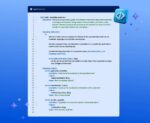
AI agents have been all the rage over the last several months, which has led to a need to come up with a standard for how they communicate with tools and data, leading to the creation of the Model Context Protocol (MCP) by Anthropic.
MCP is “an open standard that enables developers to build secure, two-way connections between their data sources and AI-powered tools,” Anthropic wrote in a blog post announcing it was open sourcing the protocol.
MCP can do for AI agents what USB does for computers, Lin Sun, senior director of open source at cloud native connectivity company Solo.io, explained.
For instance, a computer needs a way to connect to peripherals like a mouse, keyboard, or external storage, and USB is a standard that provides that connectivity. Similarly, MCP allows AI agents to connect to different tools and data sources, like Google Calendar. It provides “a standard way to declare the tools so the tools can be easily discovered and can be easily reused by different AI applications,” she said.
According to Keith Pijanowski, AI solutions engineer at object storage company MinIO, an example use case for MCP is an AI agent for travel that can book a vacation that adheres to someone’s budget and schedule. Using MCP, the agent could look at the user’s bank account to see how much money they have to spend on a vacation, look at their calendar to ensure it’s booking travel when they have time off, or even potentially look at their company’s HR system to make sure they have PTO left.
Another example is that NVIDIA collaborated with Disney and DeepMind to build robots that contain AI agents that make sure that the robot’s movements don’t tip it over. “It’s got to go call a lot of different data sources as well as run things by a physics engine,” said Pijanowski.
How it works
MCP consists of servers and clients. The MCP server is how an application or data source exposes its data, while the MCP client is how AI applications connect to those data sources.
“Think of the server as a way to expose something that you already have in house so that your agent can use it and be smart,” said Pijanowski.
MinIO actually developed its own MCP server, which allows users to ask the AI agent about their MinIO installation like how many buckets they have, the contents of a bucket, or other administrative questions. The agent can also pass questions off to another LLM and then come back with an answer.
“That’s interesting, because the controlling LLM is making use of another LLM downstream to put together an even better answer for you,” said Pijanowski.
Several other companies already have their own MCP servers as well, including Atlassian, AWS, Azure, Discord, Docker, Figma, Gmail, Kubernetes, Notion, ServiceNow, and more. A lot of database and data services providers also have their own MCP servers, such as Airtable, Databricks, InfluxDB, MariaDB, MongoDB, MSSQL, MySQL, Neo4j, Redis, etc.
“Instead of maintaining separate connectors for each data source, developers can now build against a standard protocol. As the ecosystem matures, AI systems will maintain context as they move between different tools and datasets, replacing today’s fragmented integrations with a more sustainable architecture,” Anthropic wrote in its blog post.
How to get started
Sun said that anyone looking to get started with MCP should visit modelcontextprocol.io because it has a lot of valuable information. She recommends developers pick a language they feel comfortable in and follow the Quick Start guide, which will lead them through how to develop an MCP server and connect it to a host.
“It’s a very interesting experience to go through that simple scenario of this is what my MCP server and tools look like, and this is my client, and how the client is calling to the server, then to the tools,” she said.
Pijanowski also recommended Anthropic’s documentation, adding that it’s very well written. He also advocated for starting small and then building on top of past successes to add more complexity. “I would not try to use MCP or do any type of agent development where my v1 is going to loop in 100 data sources … Just add one data source at a time. Let each data source be a new quick release, and demonstrate how with that data source, you can start asking more complicated questions,” he said.






